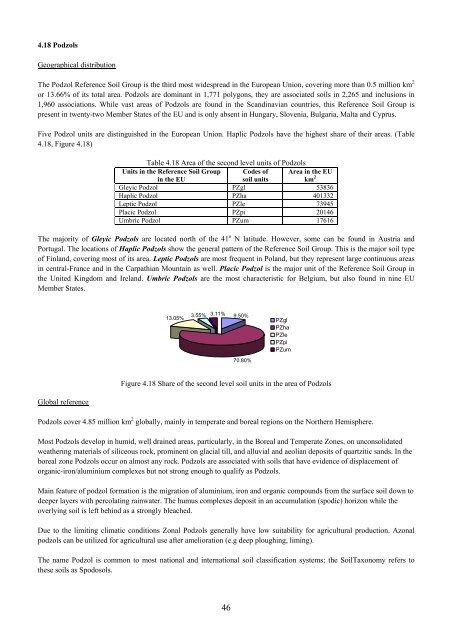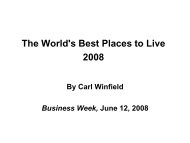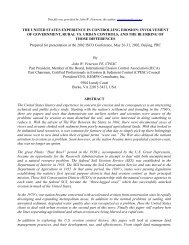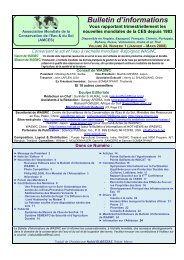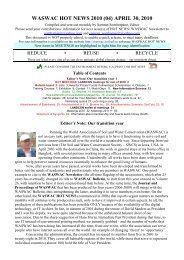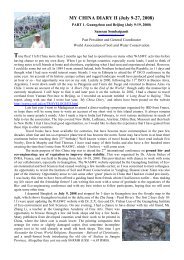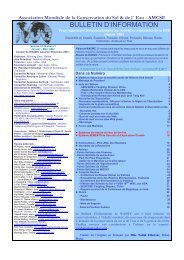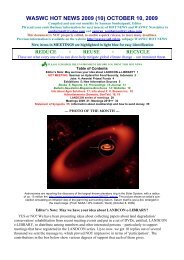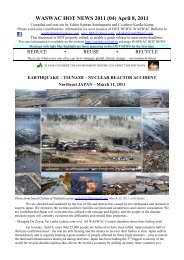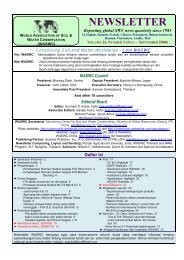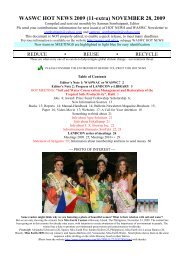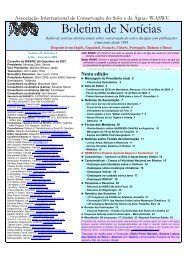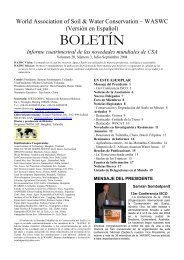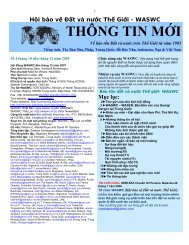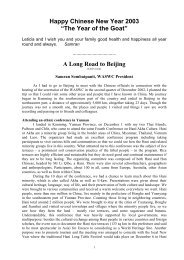Soils of the European Union - European Soil Portal - Europa
Soils of the European Union - European Soil Portal - Europa
Soils of the European Union - European Soil Portal - Europa
Create successful ePaper yourself
Turn your PDF publications into a flip-book with our unique Google optimized e-Paper software.
4.18 PodzolsGeographical distributionThe Podzol Reference <strong>Soil</strong> Group is <strong>the</strong> third most widespread in <strong>the</strong> <strong>European</strong> <strong>Union</strong>, covering more than 0.5 million km 2or 13.66% <strong>of</strong> its total area. Podzols are dominant in 1,771 polygons, <strong>the</strong>y are associated soils in 2,265 and inclusions in1,960 associations. While vast areas <strong>of</strong> Podzols are found in <strong>the</strong> Scandinavian countries, this Reference <strong>Soil</strong> Group ispresent in twenty-two Member States <strong>of</strong> <strong>the</strong> EU and is only absent in Hungary, Slovenia, Bulgaria, Malta and Cyprus.Five Podzol units are distinguished in <strong>the</strong> <strong>European</strong> <strong>Union</strong>. Haplic Podzols have <strong>the</strong> highest share <strong>of</strong> <strong>the</strong>ir areas. (Table4.18, Figure 4.18)Table 4.18 Area <strong>of</strong> <strong>the</strong> second level units <strong>of</strong> PodzolsUnits in <strong>the</strong> Reference <strong>Soil</strong> Groupin <strong>the</strong> EUCodes <strong>of</strong>soil unitsArea in <strong>the</strong> EUkm 2Gleyic Podzol PZgl 53836Haplic Podzol PZha 401332Leptic Podzol PZle 73945Placic Podzol PZpi 20146Umbric Podzol PZum 17616The majority <strong>of</strong> Gleyic Podzols are located north <strong>of</strong> <strong>the</strong> 41 o N latitude. However, some can be found in Austria andPortugal. The locations <strong>of</strong> Haplic Podzols show <strong>the</strong> general pattern <strong>of</strong> <strong>the</strong> Reference <strong>Soil</strong> Group. This is <strong>the</strong> major soil type<strong>of</strong> Finland, covering most <strong>of</strong> its area. Leptic Podzols are most frequent in Poland, but <strong>the</strong>y represent large continuous areasin central-France and in <strong>the</strong> Carpathian Mountain as well. Placic Podzol is <strong>the</strong> major unit <strong>of</strong> <strong>the</strong> Reference <strong>Soil</strong> Group in<strong>the</strong> United Kingdom and Ireland. Umbric Podzols are <strong>the</strong> most characteristic for Belgium, but also found in nine EUMember States.13.05% 3.55% 3.11% 9.50%PZglPZhaPZlePZpiPZum70.80%Global referenceFigure 4.18 Share <strong>of</strong> <strong>the</strong> second level soil units in <strong>the</strong> area <strong>of</strong> PodzolsPodzols cover 4.85 million km 2 globally, mainly in temperate and boreal regions on <strong>the</strong> Nor<strong>the</strong>rn Hemisphere.Most Podzols develop in humid, well drained areas, particularly, in <strong>the</strong> Boreal and Temperate Zones, on unconsolidatedwea<strong>the</strong>ring materials <strong>of</strong> siliceous rock, prominent on glacial till, and alluvial and aeolian deposits <strong>of</strong> quartzitic sands. In <strong>the</strong>boreal zone Podzols occur on almost any rock. Podzols are associated with soils that have evidence <strong>of</strong> displacement <strong>of</strong>organic-iron/aluminium complexes but not strong enough to qualify as Podzols.Main feature <strong>of</strong> podzol formation is <strong>the</strong> migration <strong>of</strong> aluminium, iron and organic compounds from <strong>the</strong> surface soil down todeeper layers with percolating rainwater. The humus complexes deposit in an accumulation (spodic) horizon while <strong>the</strong>overlying soil is left behind as a strongly bleached.Due to <strong>the</strong> limiting climatic conditions Zonal Podzols generally have low suitability for agricultural production. Azonalpodzols can be utilized for agricultural use after amelioration (e.g deep ploughing, liming).The name Podzol is common to most national and international soil classification systems; <strong>the</strong> <strong>Soil</strong>Taxonomy refers to<strong>the</strong>se soils as Spodosols.46


